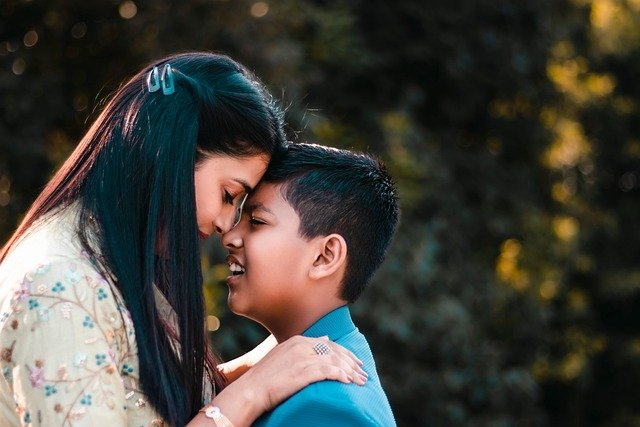As a parent, you want your child to feel safe, secure, and supported. You do everything you can to comfort them when they’re upset or overwhelmed. But when your child experiences anxiety, some of the ways we try to help—like avoiding situations, offering constant reassurance, or stepping in to fix things—can accidentally make that anxiety stronger over time.
This doesn’t mean you’re doing anything wrong. These responses come from a place of love and protection. And many of them do help in the short term. The key is recognizing when well-meaning patterns are no longer working—and learning how to gently shift toward responses that support long-term growth and confidence.
In this post, we’ll explore common ways parents may unintentionally reinforce child anxiety, and how you can respond in ways that build coping skills, self-trust, and emotional strength.
Understanding Child Anxiety—and the Role of Parental Response
Child anxiety often shows up as avoidance, reassurance-seeking, irritability, or physical complaints like headaches or stomachaches. It can be easy to mistake these behaviors for stubbornness or even defiance. But in reality, your child may be feeling scared or uncertain—and looking to you to help them feel safe.
When a child avoids something that causes anxiety (like school, new situations, or social activities), it brings immediate relief. As a parent, removing the feared situation or offering repeated reassurance also brings relief—for you and your child. But this cycle, while comforting in the moment, prevents your child from learning how to manage anxiety and discover that they can handle difficult emotions.
Offering Constant Reassurance
It’s natural to want to tell your child that everything is okay. You might say things like:
- “You’re fine—there’s nothing to be afraid of.”
- “I promise nothing bad will happen.”
- “Just don’t worry about it.”
While occasional reassurance is comforting, too much can keep your child dependent on you for emotional regulation. Over time, they may start to believe they can’t feel safe unless you tell them so.
Try this instead:
Validate their feelings without trying to erase them. “It sounds like you’re feeling nervous, and that makes sense. I believe you can get through this, and I’m here with you.”
Avoiding Anxiety Triggers Altogether
When your child is panicking about going to school or trying something new, it’s tempting to let them skip it “just this once.” After all, why force something that causes so much discomfort?
But repeated avoidance teaches your child that the world is unsafe and that the only way to feel better is to retreat.
Try this instead:
Support your child in approaching challenges at a manageable pace. This might mean breaking tasks into smaller steps, role-playing social situations, or celebrating small wins. Exposure to uncomfortable situations, paired with your support, helps build courage and capability.
Using Fear-Based or Catastrophic Language
Sometimes, parents who experience anxiety themselves may unintentionally pass on their own fears through language. For example:
- “Lock the door or someone might break in.”
- “You could get hit by a car—look both ways!”
- “Don’t touch that, you’ll get really sick.”
These warnings, while rooted in care, can unintentionally create a heightened sense of danger and make the world feel unsafe to a child who already feels anxious.
Try this instead:
Give calm, age-appropriate guidance: “Please lock the door when you come in,” or “Let’s remember to look both ways to stay safe.” You’re still protecting your child—without layering on fear.
Doing Things for Your Child That They Could Do Themselves
Children experiencing anxiety often ask for help with things they’re capable of doing on their own, like ordering food, speaking to a teacher, or trying something new. When we step in too quickly, we unintentionally send the message: You can’t handle this without me.
Try this instead:
Encourage small steps toward independence. Say, “I know this feels hard, but I believe you can do it. I’m right here if you need me.” Let your child take the lead while you offer calm support.
Avoiding Conversations About Anxiety
It can be tempting to distract your child or minimize their worries to help them feel better. But avoiding the topic of anxiety can make kids feel confused or ashamed of their emotions.
Try this instead:
Normalize the experience. “It’s okay to feel nervous sometimes. Want to talk about what’s going on?” Giving your child space to express their thoughts helps them feel understood—and teaches them how to name and manage their emotions.
What Helps Instead: Building Confidence, Not Avoidance
The goal isn’t to eliminate anxiety—it’s to help your child feel capable even when they feel anxious. That’s what builds resilience.
Here are a few ways to support your child:
- Validate emotions instead of dismissing them.
- Stay calm and model coping when things feel uncertain.
- Encourage your child to try hard things in small steps.
- Focus on effort and progress, not just outcomes.
- Let them experience manageable challenges so they can learn they can handle them.
As you begin making small shifts in how you support your child’s anxiety, it can also be helpful to reflect on what might be driving their behavior. If you’ve ever paused and wondered whether your child is being willful or if something deeper is going on, this post on recognizing the difference between child anxiety and willfulness might offer helpful insight as you continue navigating these concerns.
When to Seek Professional Support
If your child’s anxiety is interfering with school, friendships, or daily life—or if your family is feeling stuck—it may be time to reach out for professional help. Therapy can provide a safe space for your child to understand their emotions, develop tools to manage anxiety, and build confidence. And it can help you feel more supported in your parenting, too.
At Mindful Mental and Behavioral Health PLLC, our child, adolescent, and young adult therapists specialize in supporting young people who experience anxiety, fear, and emotional overwhelm. We work collaboratively with children and parents to break the cycle of avoidance and enablement—replacing it with practical tools, insight, and connection.
Worried about how to best support your child’s anxiety?
Our therapists work with children, teens, and young adults who feel anxious, overwhelmed, or stuck—and we help parents feel supported too. If you’re ready for a shift from reactive concerns to responsive empowerment, schedule an intake appointment below or call us at (207) 316-2609 to get started.




